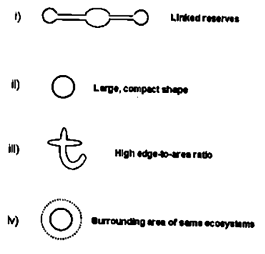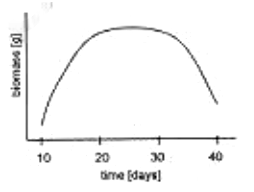 Multiple Choice Questions
Multiple Choice QuestionsWhich of the following is NOT a characteristic of late successional forest plant species?
Large seed size, high root to shoot ratio.
Long seed dispersal distance, long seed viability.
Slow growth rate, long maximum life span.
Low light saturation intensity, high efficiency at low light.
Associate the forest/vegetation type with the plants:
a. Grass land
b. Subalpine forest
c. Shloa forest
d. Sub-tropical pine forest
e. Tropical thorn forest
f. Tropical dry deciduous forest
g. Tropical semi-evergreen forest
h. Tropical wet ever-green forest
a – Ilex, b – Dichanthium, c – Abies, d – Pinus, e – Acacia, f – Anogeissus, g – Cinnamomum, h - Dipterocarpus
a- Dichanthium, b- Abies, c- Ilex, d- Pinus, e- Acacia, f – Anogeissus, g- Dipterocarpus, h- Cinnamomum
a - Dichanthium, b - Abies, c - Ilex, d – Pinus, e – Dipterocarpus, f – Cinnamomum, g – Acacia, h – Anogeissus
a – Anogeissus, b - Dichanthium, c – Ilex, d – Pinus, e – Acacia, f – Abies, g – Cinnamomum, h – Dipterocarpus
Possible explanations for the age related decline in primary productivity of trees are:
A. As trees grow larger with age, they have more tissues that respire and loose energy and proportionately less leaf area to photosynthesize.
B. Nutrient limitation by nitrogen due to reduced rate of woody litter decomposition as forest ages.
C. As trees become larger, water transport to the top conopy leaves becomes limited because of increase hydraulic resistance. This results in reduced stomatal conductance and reduction in photosynthetic rate.
Which of the above is/ are correct?
A, B and C
Only A
Only A and C
Only B and C
Based on the information given in the table below, which combination is corrct?
| Biographic zone | Plant | Animal |
| A1 - Mediterranean | B1 - Rhodedendron | C1 - Gibbon |
| A2 - Indo-Chinese | B2 - Dipterocarpus | C2 - Jungle fowl |
| A3 - Indo-Malayan | B3 - Euphorbia | C3 - Takin |
| A4 - Peninsular India | B4 - Deodar | C4 - Ibex |
A1 – B3 – C3
A2 – B1 – C4
A3 – B2 – C1
A4 – B4 – C2
C.
A3 – B2 – C1
The combination that is correct is of option c.
In a census for a lake fish, 10 individuals were marked and released. In second sampling after a few days 15 individuals were caught, of which 5 individuals were found marked. The estimated population of the fish in the lake will be
20
30
25
35
Which of the following combinations is good for setting up a nature reserve:

(i), (ii), (iii)
(ii), (iii), (iv)
(i), (iii), (iv)
(i), (ii), (iv)
Growth of an organism was monitored at regular intervals of time, and is shown in the graph below. Around which time is the rate of growth zero?

Close to day 10.
On day 20.
Between days 20 and 30
Between days 30 and 40
If milk is left open, lactose is fermented first to produce acid. This is followed by proteolytic bacterial activity which increases the pH. Ultimately milk fats are degraded to produce rancidity. This is an example of
Ecological succession
Microbial antagonism
Interference competition
Microevolution
Secondary sewage treatment involves
Physical removal of solids from polluted water by filtration and sedimentation.
Removal of chemical remains by precipitation.
Removal of dissolved organic compounds by activated sludge or trickling filter.
Removal of microbial pathogens by chlorination or ozonization.
